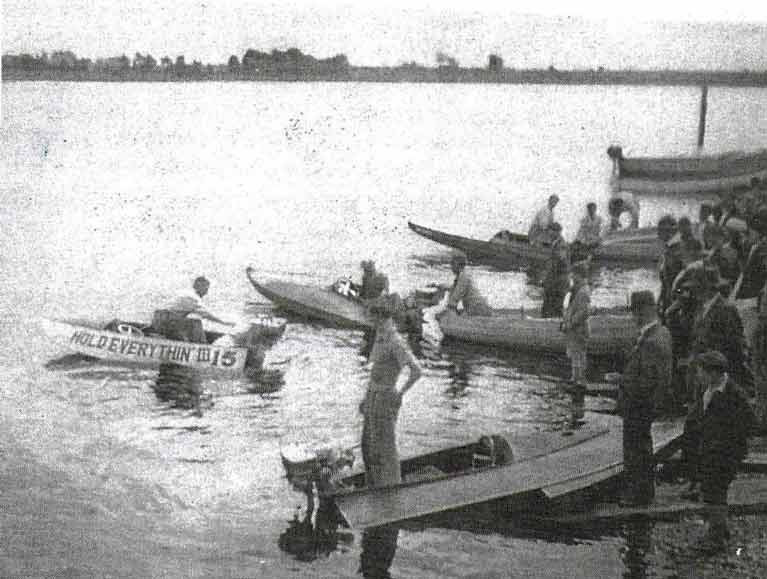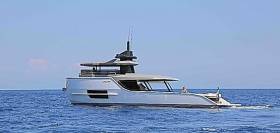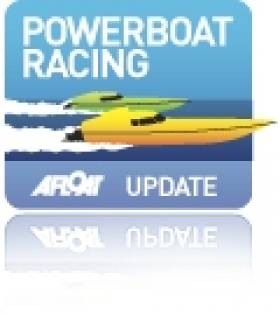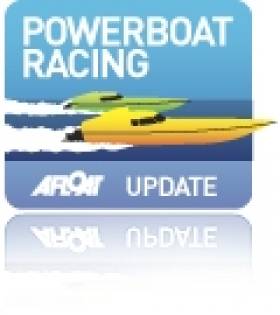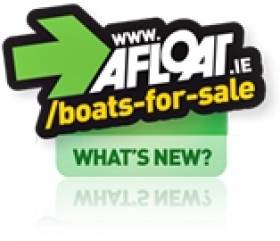Displaying items by tag: Motorboat
July 12, 1903 was also a Sunday, but it was not the sound of Orange bands marching that dominated the River Lee from Cobh to Cork City, but that of powerboat engines competing for what had been envisaged as the “America’s Cup” of motorboating.
Irish-born newspaper mogul Alfred Charles Harmsworth, Viscount Northcliffe, had organised what is known as “the first motorboat race.”
The trophy was the Harmsworth Cup, envisioned by Northcliffe as “a contest between nations rather than between boats and individuals.”
The course was from Cobh (then Queenstown) to Cork City. It was officiated by the Automobile Club of Great Britain and the Royal Cork Yacht Club for boats, as the rule of the race declared “designed and built entirely by residents of the country they represented.”
 Photos from Vincent Delany's new book on the history of motoboating in Ireland
Photos from Vincent Delany's new book on the history of motoboating in Ireland
As reported by Cork newspapers: “A large number of spectators viewed the first mile from the promenade of the yacht club at Queenstown and several thousand people were at both sides of the river at Cork City to see the finish.”
The race was won by a woman – Dorothy Levitt, travelling at nineteen-and-a-half-miles an hour, regarded as an “extraordinary speed for motorboats” in those days.
She was described as “a remarkable sportswoman who had the first proper motorboat designed for high speed, to the specifications of an Australia, Selywn Edge” In later years she would set the world’s first water speed record at 19.3 miles per hour (31.1km/h).
This fascinating story is told by yachting historian Vincent Delany in his book about ‘”The Motor Yacht Club of Ireland, founded four years after the Harmsworth Cup race, in 1907. Dedicated to “the memory of those men in their floating machines,” in 44 pages it details, with historic photographs, the progress of motorboating in Irish waters.
It had been intended to stage an International Power Boat Festival in Cork Harbour this past weekend (July 11/12) as part of the RCYC Cork 300 celebrations but that was prevented by the Covid 19 pandemic.
For this week’s Podcast I’ve been talking to author Vincent Delany, starting by asking him why Cork was the location for the first motorboat race:
This week’s Podcast here
Arcadia Sherpa 55 – A Glimpse at the Future of Motorboat Design?
What about this for a day cruiser, a shadow boat, a support vessel or even as a fishing boat? The Italian built Arcadia Sherpa 55 from Naples has an extremely short foredeck and expansive cockpit behind the superstructures. The most striking feature is its tug–style bow extending up to the upper deck.
The first of these boats for sale came with two spacious cabins, although three will be possible on future models. From the deck saloon there is a magnificent view through the large windows to aft over the cockpit that is located a level above the 13 m² tender garage. The flybridge with its breezy outside helm station can be fully enclosed with windows, be it to defy inclement weather or to provide protection from heat with the aid of the air conditioner.
Two Volvo Penta IPS 600 drives deliver a top speed of 25 knots.
Powerboat Adventurer to Address Kerry Motorboat Weekend
#motorboat – A fun filled weekend to enjoy boating in one of the most picturesque locations in Western Europe that's how Dromquinna Manor is billing its 2014 Motor Boat Weekend that takes place on the May Bank Holiday Weekend, May 2nd-5th.
The free event offers a host of activities from renowned guest speakers to adventure challenges all in the company of fellow boaters.
Alan Priddy, the powerboat adventurer, who has set several boating world records will talk about his circumnavigation of the world by RIB.
Schedule below:
Saturday May 3rd
11am
Lets Talk Engines
With Kevin from Marine Motors Cork.
12pm
Safety at sea
Use of flares and safety equipment.
1.30pm
Briefing
2pm
Treasure Hunt and Poker Run on Kenmare Bay
8pm
Boaters Evening at Shutters on the Pier Dromquinna
Presentation and talk with Alan Priddy
Alan is a British power boat sailor and adventurer who has set several boating world records. Alan circumnavigated the world in a rigid-hulled inflatable boat and is currently spearheading the first Great Britain Vs USA Powerboat World Record Circumnavigation.
9pm
Waterfront screening of Perfect Storm
Fork Supper and film €30
Proceeds to Derrynane Inshore Rescue
Sunday May 4th
10.30am Bull Run Briefing
11am
The Bull Run for Fun
The Annual Bull Run for Fun departs to the Bull Rock. The 74 nautical mile cruise to the famous landmark in the Atlantic is the highlight of the weekend and a real adventure for all. The majestic rock awaits in all its glory and leaves lasting memories of a day/weekend of true boating enjoyment.
7.30pm
Party & Prize giving at Shutters on the Pier
Dromquinna Manor Hosts Motorboat Weekend
Hugo Montgomery Swan, the editor of Powerboat & Rib Magazine is part of the line up at Dromquinna Manor's Motor Boat Weekend this May bank Holiday at Kenmare, Co. Kerry. Dromquinna's John Brennan promises a weekend 'filled with adventure and activities' dedicated to motor boat enthusiasts on Kenmare Bay. The weekend format is below. A pdf flyer is also available for download below.
Friday
7pm Welcome Reception at Dromquinna Manor
Speaker Hugo Montgomery Swan Editor of Powerboat & Rib Magazine Organiser of Round Ireland Challenge 2013
9pm Tom Crean Restaurant - Explorer Dinner
Hosted by Tom Crean's grandaughter who will tell of his epic voyages following
dinner. €35 Reservations 064 6641589.
Saturday
10am Navigation Workshop
11am Mechanical Workshop with Marine Motors Cork
12pm Basic Safety Demonstration
1pm Launch of 'The Men's Shed' Curragh
Blessing of the Boats
2pm Treasure Hunt on Kenmare Bay
A leisurely fun filled excursion on Kenmare Bay
6pm Helens Bar Kilmackillogue
Optional night cruise back to Kenmare
Sunday
7-9am Refuelling
10am Bull Run for Fun
The famous annual outing to The Bull Rock
Lunch in Portmagee at own expense
Afternoon Cruise to The Skellig Rocks
Return to Dromquinna Manor
Total distance 120 miles
7pm BBQ at Dromquinna Manor
€20. Reservations 064 6642888
Monday
Wash down and depart
#BOATS FOR SALE – A 2005 version of an Aquador 28 sports cruiser is on the market through Fitzgerald Marine of Kinsale in Co. Cork. This Finnish made boat is a popular model in Ireland thanks to the pionneering efforts of distributors MGM Boats who showed off the boats suitability of the robust hull to rough Irish waters when they first imported the Scandinavian craft more than a decade ago.
The Fitzgerald marine boat at €99,000 is less than half the price of a new boat. The 28 is the largest hard top boat in the Aquador range and a bigger example of the 26 Hard Top. Aquador always make a big play about the feeling of space below deck and while this is true it is the practicality of the all weather hard top, the proven hull and wide walk-around decks that makes the Aquador 28 so safe for family use and thus so appealing for Irish boaters. Full advert here.
See all our motorboats for sale on the Afloat Boats for Sale site


























